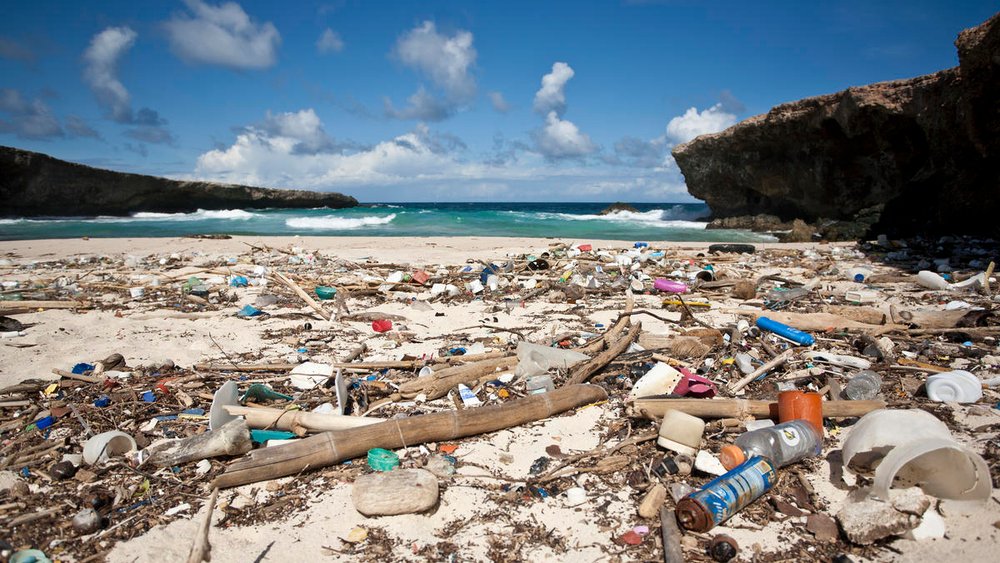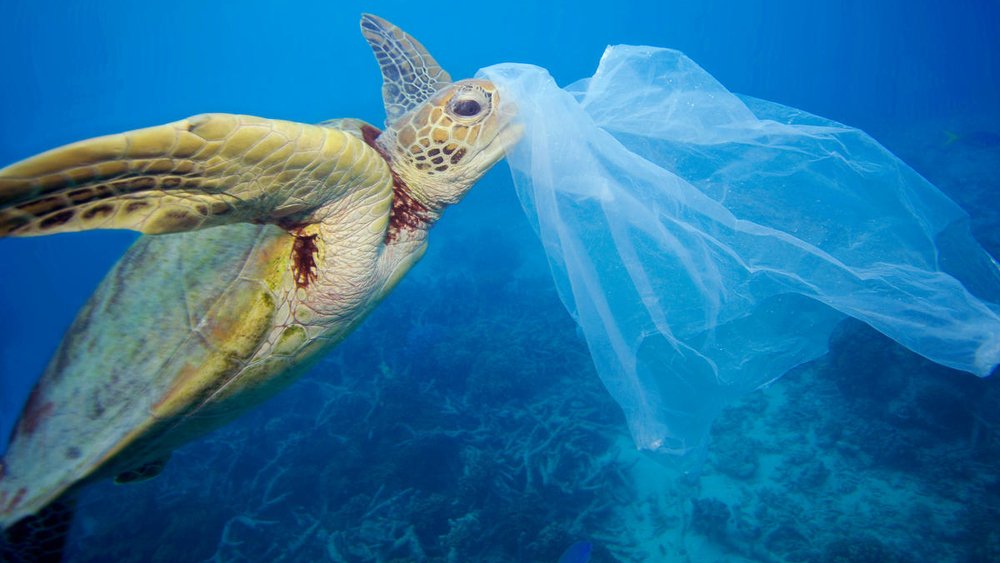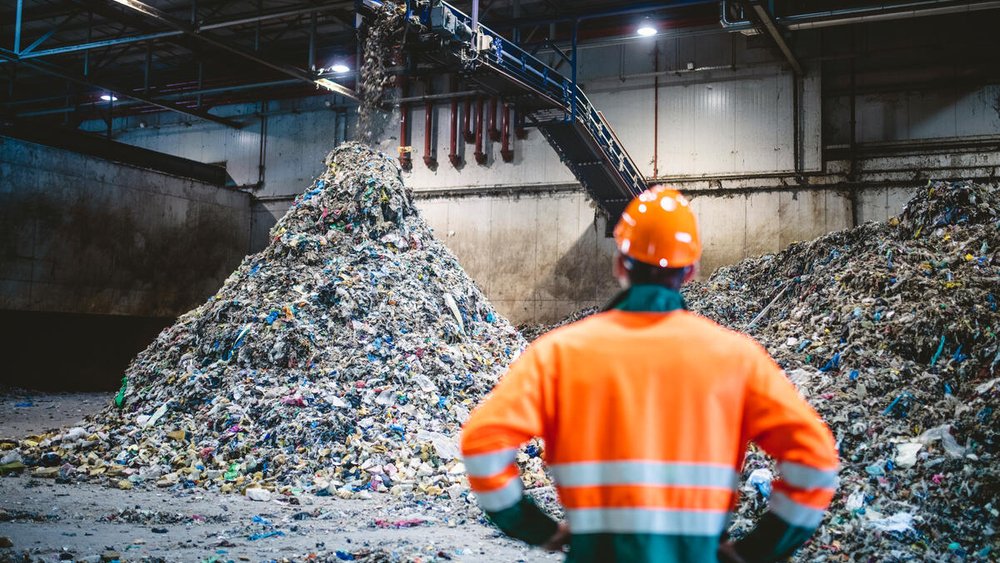This Earth Day, Plastic Pollution is Among the Planet’s Biggest Threats | Blog | Nature
This post comes to PBS Nature from World Wildlife Fund (WWF). WWF and Nature are collaborating on a series of blog posts from WWF conservation scientists that will share the stories and motivations behind cutting-edge conservation research.
Imagine you’re walking along the beach—it’s a sunny day, the waves are gently crashing on the shore, and there’s a warm breeze in the air. Suddenly, you hear the beep-beep-beep of a truck backing up and when you turn around to see what’s going on, you notice a dump truck pouring plastic waste into the ocean. What do you do? How would this make you feel?
Unfortunately, this hypothetical scenario represents the reality of plastic pollution today. Some 11 million metric tons of plastic enter our oceans each year—that’s equivalent to at least one dump truck per minute. This Earth Day, we must recognize that one of the biggest threats to our planet is plastic pollution.

Plastic garbage litters a beach on the Caribbean Sea in Boca Prins, Aruba. © Hannele Lahti / National Geographic Creative
It’s not just unsightly beaches we need to be worried about—plastic pollution is incredibly harmful to marine life. Conservatively, at least 2,141 marine species encounter plastic pollution in their natural environments, and the vast majority of these species that have been studied have been found to experience negative effects due to plastic. Animals get trapped by plastic debris such as abandoned fishing gear like nets, ropes, and fishing lines. Animals can also mistake plastic for food. Plastic bags look a lot like jellyfish to a sea turtle. It’s estimated that up to 90% of all seabirds and 52% of all sea turtles today ingest plastics. Plastic pollution deprives corals, sponges, and bottom-dwelling species of light, oxygen, and food. Whole ecosystems, such as coral reefs and mangroves, are put at risk due to plastic pollution.

Green sea turtle (Chelonia mydas) with a plastic bag, Moore Reef, Great Barrier Reef, Australia. The bag was removed by the photographer before the turtle had a chance to eat it. © Troy Mayne / WWF
Plastics can also have harmful impacts on people, and many of these impacts are disproportionately borne by low-income and disadvantaged communities. For example, petrochemicals, which are used in plastic production, can have harmful impacts on people, as exemplified by “Cancer Alley” in Louisiana — an 85-mile stretch along the Mississippi River between New Orleans and Baton Rouge where over 200 petrochemical plants and refineries exist among predominantly Black and low-income communities. These communities face elevated rates of cancer, reproductive, maternal, and newborn health harms, and respiratory problems.
At the other end of the plastic life cycle, the mismanagement of plastic waste also negatively impacts people, including through toxic pollution from open burning, unsafe working conditions for waste disposal workers, and impacted livelihoods from environmental degradation. As plastic breaks down into microplastics, it finds its way into our water and food – and into our bodies. We are consuming more and more plastic. While we don’t yet know the full impact of plastic pollution on human health, research increasingly shows that there is real cause for concern.
You might be thinking, “If everyone would just recycle, we wouldn’t be in this mess.” While recycling is widely known as the go-to solution to plastic pollution, scientists and other experts now know that recycling alone will never solve this problem. Don’t get me wrong—recycling is important. But our current recycling system doesn’t have the capacity to deal with the large volumes of plastic waste we generate. Indeed, only 9% of all plastic ever produced has been recycled.

Rear view of young male worker in helmet, pollution mask, and reflective clothing observing waste falling from conveyor belt onto pile at facility. plastic recycling facility. © Getty Images / AzmanJaka
What’s more, plastic degrades every time it is recycled and can usually be recycled no more than two or three times before it ultimately becomes waste anyway. Even if the entire world took on an ambitious strategy focused only on recycling, it would still result in 18 million metric tons of plastic entering the ocean every year by 2040.
So, what can you do? If recycling is not enough, then what is? The first solutions we should be looking at are ones that reduce the amount of plastic we use in the first place, either through eliminating unnecessary or problematic plastics or by shifting to reuse. Examples of plastics you can reduce include food service items like plastic straws or utensils when they’re not needed or unnecessary packaging or bags for produce at the grocery store. You can also reuse a product or packaging multiple times for the purpose for which it was originally intended. Examples of reuse include refilling your own reusable water bottle, grocery bag, or soap dispenser.
If we implement these reduction and reuse strategies alongside other solutions, including recycling, we can reduce 80% of the plastic that leaks into the ocean by 2040. On the other hand, if we continue our current trajectory, the amount of plastic entering our oceans each year is expected to nearly triple by 2040 to 29 million metric tons.
The plastic pollution crisis is complex, and solving it requires a combination of solutions. While reducing your own plastic footprint is an important part of the answer, consumer behavior changes must be paired with larger systems change, including policy frameworks, financial incentives, improved infrastructure, and new business models in order to be effective.
Source: World Wildlife Fund’s plan for No Plastic in Nature.


